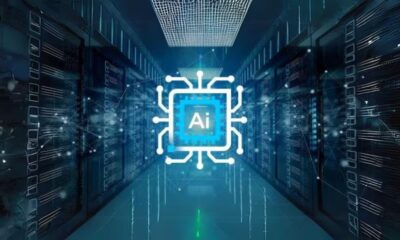In the year since its public release, OpenAI’s ChatGPT artificial intelligence (AI) tool has experienced exponential growth in popularity. Because of its phenomenal success, tech companies have been competing to stay ahead of the curve, and lawmakers and regulators are rushing to keep up with the rapidly changing industry.
According to Similarweb data, ChatGPT received 15.5 million visits in its first week of operation after going live at the end of November. The data shows that in ChatGPT’s second week of public access, visits more than tripled to 58 million.
Since then, ChatGPT has been integrated into Microsoft products, Google and other tech firms have released competing products, and Congress has become interested in — and scrutinized by — the chatbots’ growing popularity.
However, OpenAI had a busy week as ChatGPT approaches its one-year anniversary. After receiving pressure from hundreds of workers, the company’s board removed CEO Sam Altman and then rehired him a few days later.
At its peak, ChatGPT had 1.8 billion visits. According to Similarweb data, ChatGPT saw a sharp increase in visits from the time of its launch until reaching a peak in May with 1.8 billion visits. After peaking in May, ChatGPT’s traffic dropped to 1.6 billion in June, marking the first decline since the platform’s launch. An early concern about how AI would affect various industries and jobs was that students were using ChatGPT, potentially to cheat on assignments.
According to Similarweb’s data, chatGPT traffic peaked in August at 1.4 billion visits, but by October, it had returned to 1.7 billion visits.
The amount of traffic that ChatGPT generated propelled OpenAI’s website to rank among the most popular websites globally.
The OpenAI website received more visits in April than the websites of Netflix, Reddit, and LinkedIn; however, over the summer, Similarweb indicates that those websites surpassed OpenAI once more.
A major development in generative AI, according to Sarah Kreps, director of the Tech Policy Institute at Cornell Brooks School of Public Policy, was the release of the first “consumer facing, user friendly generative AI app.”
“This was something that normal people could use, but also then this percolated so quickly into businesses and now has transformed how so many different industries do business,” Kreps said.
Rival goods were released
In February, as ChatGPT gained immense popularity and was being used extensively, Google introduced Bard, a competing chatbot. Google’s Language Model for Dialogue Applications, or LaMDA, powers Bard.
Microsoft revealed its intentions to integrate ChatGPT into its Bing search engine, just a day after Google revealed Bard and its intentions to integrate it into search features. Microsoft gave OpenAI billions of dollars.
With their simultaneous announcements, the two companies set off a race to stay ahead of the AI curve, with others following suit.
Microsoft employed Open AI’s GPT-4, a more sophisticated version of its AI tool, to power AI in Bing search. Open AI released GPT-4 in March.
Over Bard, ChatGPT continues to have a substantial traffic advantage. Based on Similarweb data, Google’s Bard received 266.1 million visits in the last three months, while ChatGPT received 1.7 billion visits.
As ChatGPT grew, other tech companies joined the AI fray as well.
Facebook and Instagram’s parent company, Meta, declared in July that its large language model, Llama 2, was open-sourced and would be available for research and commercial use.
Earlier this month, Elon Musk’s xAI company revealed a rival to ChatGPT with a “rebellious streak.”
Congress’s examination of AI
With ChatGPT’s growing popularity and the emergence of competitors, the federal government started to think about safeguards to reduce potential risks like job losses and misinformation spreading. Altman expressed his “worst fears” in a May testimony to a Senate Judiciary subcommittee, saying that he believes the technology sector will “cause significant harm to the world.”
“I think if this technology goes wrong, it can go quite wrong, and we want to be vocal about that. We want to work with the government to prevent that from happening,” he added.
Additionally, Senate Majority Leader Charles Schumer (D-N.Y.) has organized a number of AI insight forums that bring together executives from tech companies and civil society organizations to talk about the advantages and disadvantages of AI. Altman attended the first closed-door forum in September, along with the CEOs of Google, Microsoft, Meta, and other tech companies.
In October, the White House issued a comprehensive executive order on AI, which is currently being considered by Congress. New safety regulations are part of the order, which also mandates that businesses creating models that seriously endanger the public’s health, the economy, or national security notify the government before training the models.
Additionally, it instructs federal agencies to expedite the development of methods for training AI while maintaining the privacy of the training set.
Unrest at OpenAI
Altman was unexpectedly fired as CEO of OpenAI on Friday afternoon, according to a report, because he was “not consistently candid in his communications with the board.” according to the review.
Following the news, OpenAI president and board chair Greg Brockman resigned, and it was later reported that hundreds of workers threatened to quit if Altman was not reinstated.
OpenAI first named OpenAI Chief Technology Officer Mira Murati as its interim CEO, then Emmett Shear, the CEO of Twitch, before announcing on Tuesday that Altman would return with a largely new board.
Microsoft recruited Altman and Brockman to head a generative AI team in the interim between the tech giant’s firing of Altman and the agreement to bring him back.
Microsoft and the AI company will maintain their partnership in spite of the recent upheaval.
“We are encouraged by the changes to the OpenAI board. We believe this is a first essential step on a path to more stable, well-informed, and effective governance,” Microsoft CEO Satya Nadella stated on X, the website that used to be Twitter, on Tuesday.
“Sam, Greg, and I have talked and agreed they have a key role to play along with the OAI leadership team in ensuring OAI continues to thrive and build on its mission. We look forward to building on our strong partnership and delivering the value of this next generation of AI to our customers and partners,” he added.
Additionally, Altman expressed his excitement about going back to OpenAI and “building on our strong partnership with [Microsoft].” in a post on X.


 Business3 weeks ago
Business3 weeks ago
 Business4 weeks ago
Business4 weeks ago
 Business4 weeks ago
Business4 weeks ago
 Technology4 weeks ago
Technology4 weeks ago
 Business2 weeks ago
Business2 weeks ago
 Technology3 weeks ago
Technology3 weeks ago
 Technology3 weeks ago
Technology3 weeks ago
 Business2 weeks ago
Business2 weeks ago


